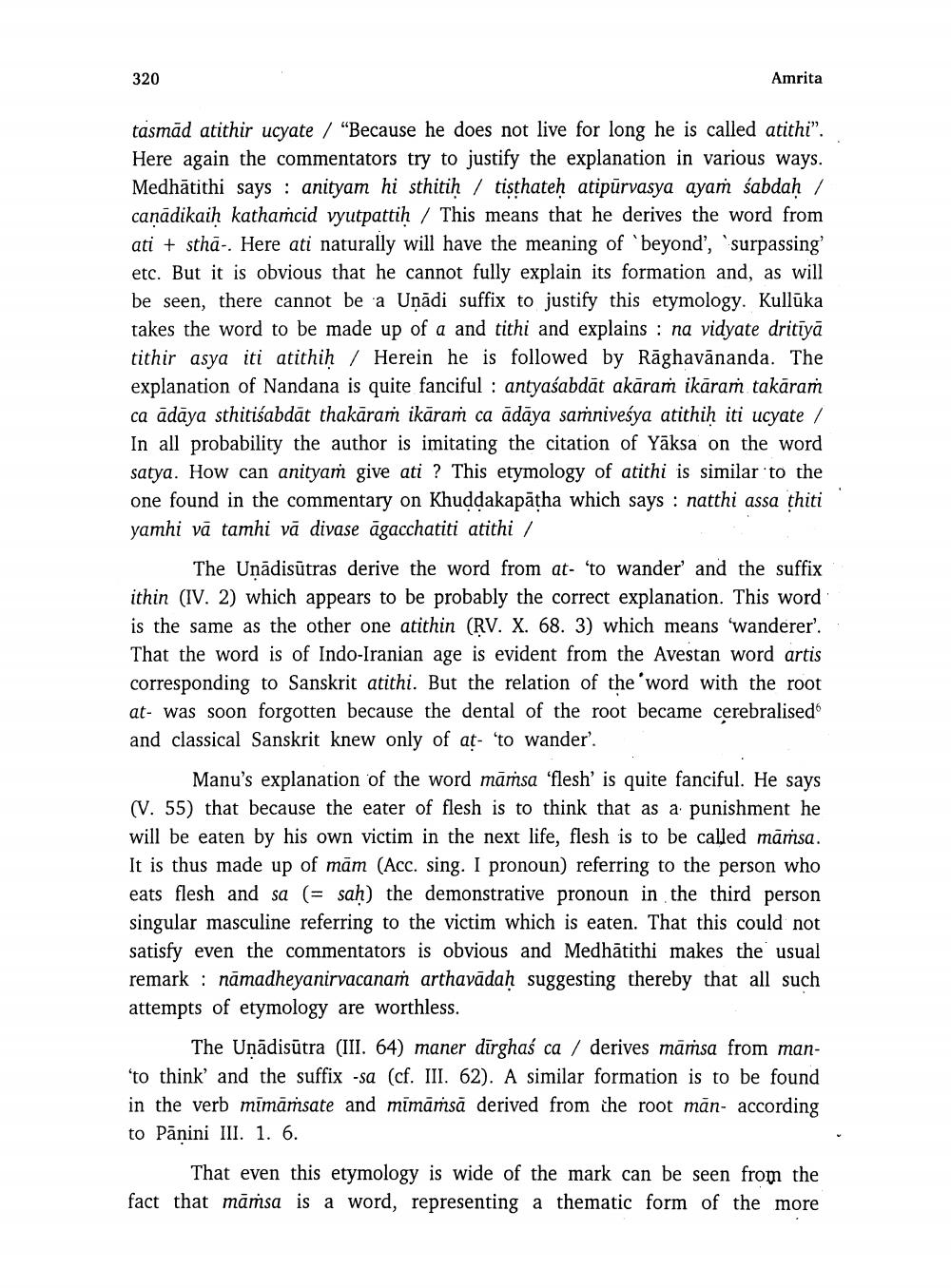________________
320
Amrita
tasmäd atithir ucyate / "Because he does not live for long he is called atithi". Here again the commentators try to justify the explanation in various ways. Medhātithi says: anityam hi sthitiḥ/tisthateḥ atipūrvasya ayam sabdaḥ / caṇādikaiḥ kathamcid vyutpattih / This means that he derives the word from atistha-. Here ati naturally will have the meaning of 'beyond', 'surpassing" etc. But it is obvious that he cannot fully explain its formation and, as will be seen, there cannot be a Uṇādi suffix to justify this etymology. Kullūka takes the word to be made up of a and tithi and explains na vidyate dritīyā tithir asya iti atithiḥ/ Herein he is followed by Raghavananda. The explanation of Nandana is quite fanciful: antyaśabdāt akāraṁ ikäraṁ takāram ca adaya sthitisabdāt thakāraṁ ikāraṁ ca ādāya saṁniveśya atithiḥ iti ucyate/ In all probability the author is imitating the citation of Yaksa on the word satya. How can anityam give ati ? This etymology of atithi is similar to the one found in the commentary on Khuddakapātha which says: natthi assa thiti yamhi va tamhi va divase agacchatiti atithi /
The Unādisūtras derive the word from at- 'to wander' and the suffix ithin (IV. 2) which appears to be probably the correct explanation. This word is the same as the other one atithin (RV. X. 68. 3) which means 'wanderer'. That the word is of Indo-Iranian age is evident from the Avestan word artis corresponding to Sanskrit atithi. But the relation of the 'word with the root at was soon forgotten because the dental of the root became cerebralised and classical Sanskrit knew only of at- 'to wander'.
Manu's explanation of the word māmsa 'flesh' is quite fanciful. He says (V. 55) that because the eater of flesh is to think that as a punishment he will be eaten by his own victim in the next life, flesh is to be called mämsa. It is thus made up of măm (Acc. sing. I pronoun) referring to the person who eats flesh and sa (= sah) the demonstrative pronoun in the third person singular masculine referring to the victim which is eaten. That this could not satisfy even the commentators is obvious and Medhātithi makes the usual remark nāmadheyanirvacanaṁ arthavādaḥ suggesting thereby that all such attempts of etymology are worthless.
The Uṇādisūtra (III. 64) maner dirghaś ca / derives māmsa from man'to think' and the suffix sa (cf. III. 62). A similar formation is to be found in the verb mimämsate and mimämsä derived from the root man- according to Panini III. 1. 6.
That even this etymology is wide of the mark can be seen from the fact that mamsa is a word, representing a thematic form of the more




